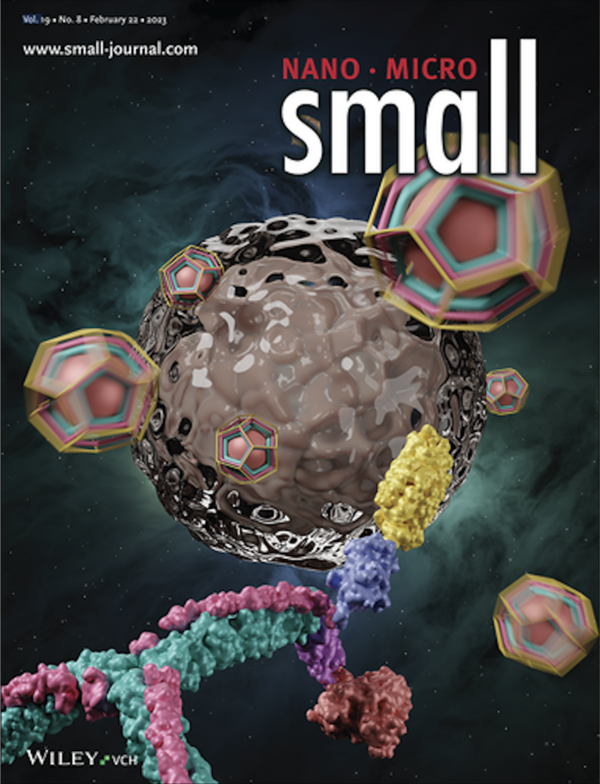
For decades, cancer has been one of the most significant areas of interest for biologists to find an effective treatment without detrimental side effects. The KAIST Herald interviewed Hong-Sik Kim, who conducted his research at Professor Hak-Sung Kim’s laboratory in the Department of Biological Sciences and published a paper under the title, “Construction and Functionalization of a Clathrin Assembly for a Targeted Protein Delivery” in December 2022. His study has been featured on the cover page of Volume 19 No. 8 of the international journal Small on February 22.
Can you explain your scientific paper to our readers?
Clathrin is a type of protein assembly that exists inside our body and is responsible for endocytosis, [a process that] transports substances [into] cells. Three of each heavy and light chains compose a unit named triskelion, which is later grouped to form [a clathrin] assembly. Existing inside a cell, clathrin forms an assembly during the process of absorbing external substances and adheres to the inner cell membrane. I got an initiative for research where we can utilize clathrin to deliver drugs to cure cancer from outside the cell. Specifically, we had to design the process for building the clathrin assembly while eliminating unnecessary [functions] such as adhesion to cell membranes. New parts such as attachment of drugs on proteins and recognition of cancer cells by the heavy and light chains were included. There is a significant advantage of having a group of clathrin assemblies rather than a single protein as its coherence increases by more than 900 times, verifying its ability to deliver drugs to cancer cells.
What was the initiative for this research?
Actually, I did not design this research topic from the outset. I participated in the Global Ph.D. Fellowship held by the National Research Foundation of Korea as a graduate student, [where] the project was to utilize nanotechnology named DNA origami to deliver drugs to cells. However, the research project did not turn out [as] well as I expected — I designed the experiment but found out that there would be some difficulties demonstrating it. While pondering over how to overcome the obstacles, I figured out that a protein named clathrin could be the key to the problem, thus I initiated this research project.
Were there any difficulties that you faced while conducting the research? How did you overcome them?
I think the most difficult part of the research was time. This project has been prolonged for a very long time, as [my] Global PhD Fellowship started in 2016. I finalized this research topic in 2017 and there were many difficulties and adjustments during the five years, but luckily, the results turned out well after a long endurance. The reality of poor experiment outcomes and a longer research period than initially expected were the biggest obstacles for me in navigating the project. What I could do to overcome such difficulties was to just think optimistically that everything will work out well one day and steadily continue the research while trusting myself.
What is the significance of your research in the scientific field and our lives?
In nature, there exist various protein assemblies; ferritin and virus-like particles are the most commonly used incurrent research. In the case of clathrin, while there is significant research on the theoretical parts and its basic mechanism, there have not been many applications for curing cancer, so I think this research is very original in that perspective. In order to be applied for therapeutic purposes [on the human body], it needs to pass very strict standards. This system has only been verified at the cellular level but not yet for animal testing. After verification from animal testing, it still needs to undergo investigation for suitability for the human body as well as optimization of the production process, so I think more research will be needed.
Is there any follow-up research you want to conduct in the future?
As Professor Hak-Sung Kim retired this year, I was his last graduate [student] and it was very meaningful to finish my research in a laboratory with more than 30 years of tradition. I am also thankful to Small for choosing this research as its cover study. I am very attached to [this research] as I have contributed to it from the very beginning to the end [for a long time — I even] spent a week studying design programs for the cover. In the future, I want to continue researching protein assembly. Numerous prominent scientists have already invented artificially synthesized protein assemblies and I would also like to invent one that is verified in terms of its safety and originality.

